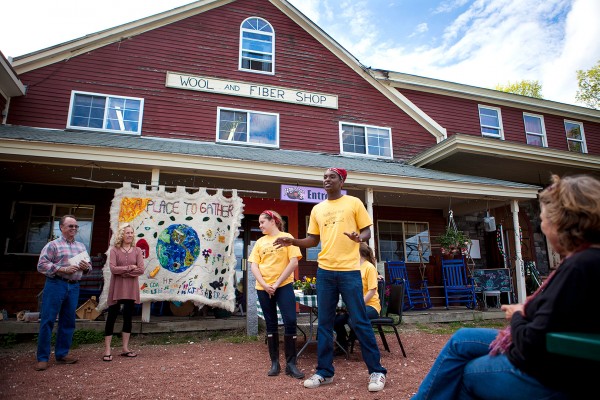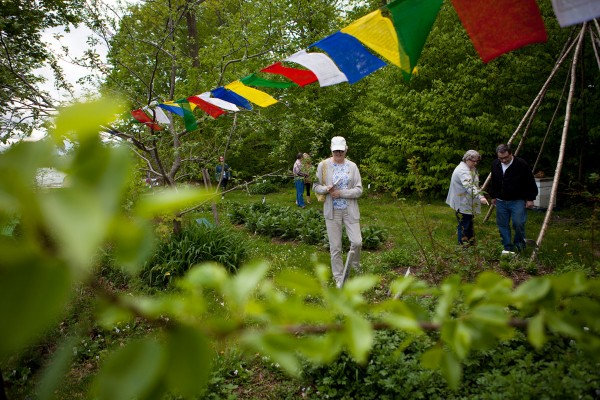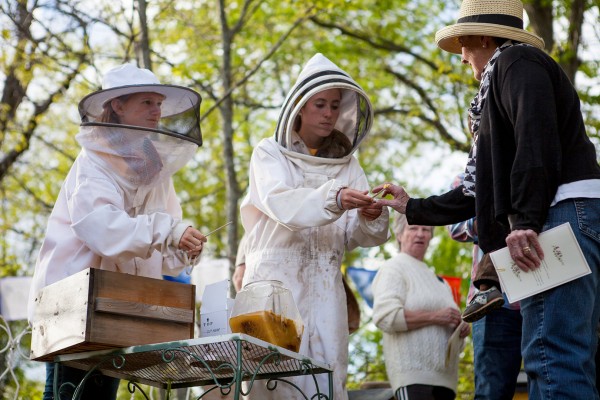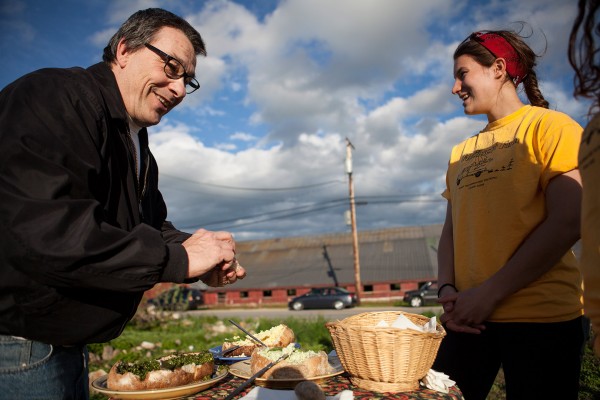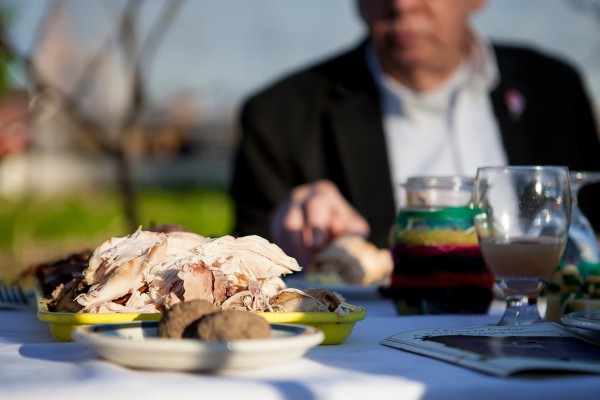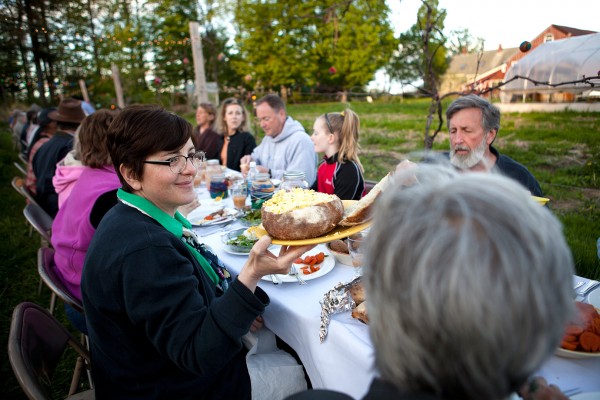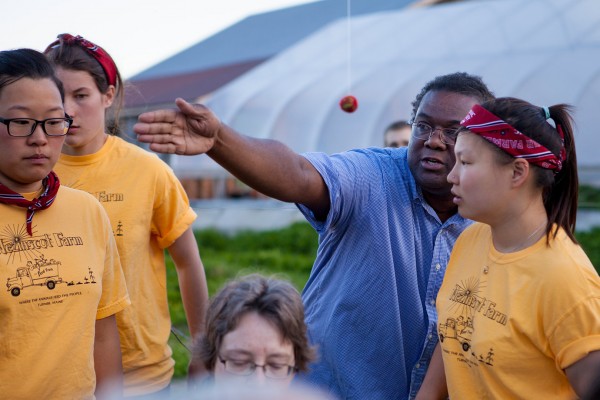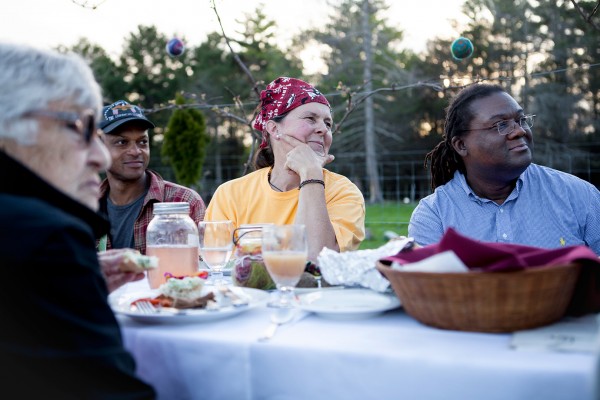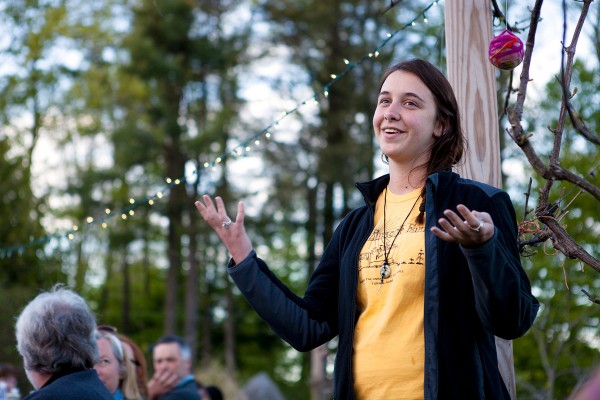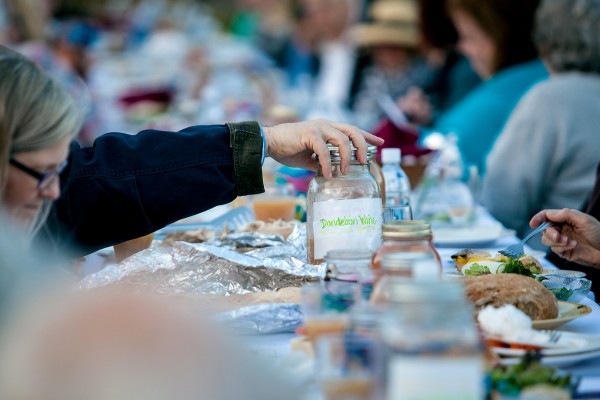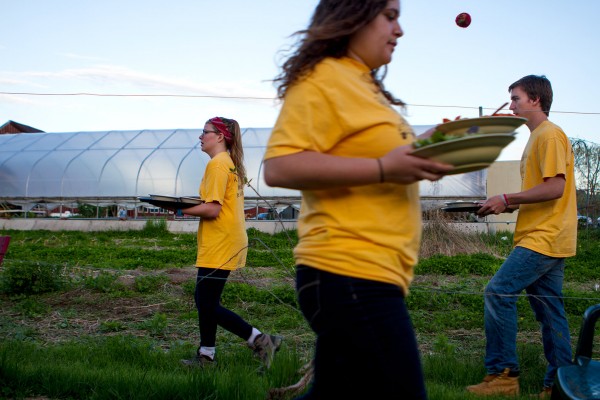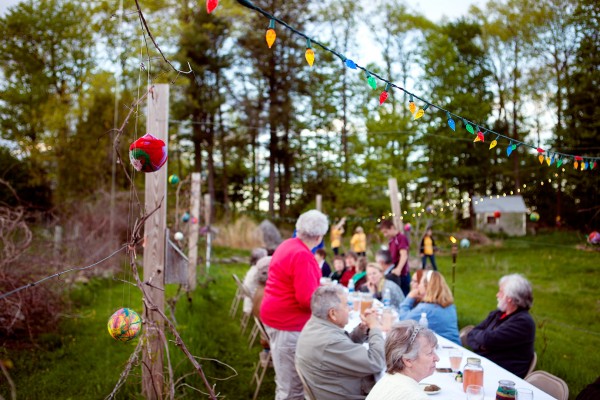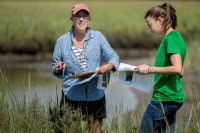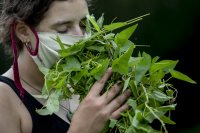
Slideshow: Students serve farm-to-table dinner at Nezinscot Farm
Any Bates student will tell you that gathering together in one dining hall, enjoying food prepared in kitchens nearby, creates community.
Learning why food, place and hospitality are such a great recipe for communal experience was the topic for students in the Short Term course “Food, Culture and Performance.”
Each morning, the students gathered with their professor, Myron Beasley, to “learn the theory associated with food politics, community, and the issues of hunger.” They also studied Maine farming, the area’s history and sustainable practices.
In the afternoon, they trekked to nearby Nezinscot Farm to work with farm co-owner Gloria Varney, their partner for the course.
At the organic farm, theory met practice as students learned just where their food, quite literally, gets born.
And on May 21, the course culminated with a “performative dinner,” created and served by students to 50-plus guests at the Turner farm. The meal featured food raised on the farm and prepared by the students, including meat from animals slaughtered earlier in the spring.
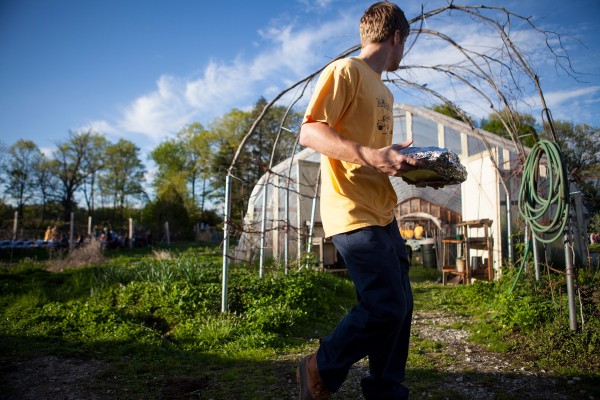
A student clears food from the tables during the outdoor performative dinner at Nezinscot Farm on May 21. (Sarah Crosby/Bates College)
A performative dinner, explains Beasley, an associate professor of American cultural studies and African American studies, is akin to performance art. With the latter, “the artist is both the subject and the object of the art-making.”
During a performative dinner, “the food becomes both the object and subject, to make known the cultural politics surrounding the object — in this case, the food.”
In its May 28 edition, The Portland Press Herald took note of the distinctive course offering, publishing a major feature under the headline “Bates students dig in to understand farming.”
Below, 12 photographs by Sarah Crosby capture what Beasley calls the “integration of food and culture and community.”
5:58 p.m.: Gather ye Bobcats
Sporting yellow “Team Nezinscot” T-shirts, Penelope Ganske ’17 of Chagrin Falls, Ohio, and Harrison Brown ’17 of Mount Kisco, N.Y., offer guests a tour of Nezinscot Farm before the evening’s meal.
On the quilt and T-shirts, the phrase “A Place to Gather” is the students’ interpretation of “Nezinscot,” an Abenaki word meaning “to descend upon.”
6:04 p.m.: Garden party
During a pre-dinner tour, guests walk through the farm’s herb garden, dubbed the “Medicine Garden.” Students encourage the guests to find and pick an herb that “calls to you.” Tibetan prayer flags wave in the breeze.
6:12 p.m.: Bee my honey
Wearing bee suits, Kelsey Mehegan ’15 of Duxbury, Mass., left, and Krista Prouty ’15 of Norwell, Mass., offer fresh, raw honey samples to guests.
6:26 p.m.: Cultivating the liberal arts
Ron Begin of Lewiston samples chèvre (goat cheese), kale and cilantro pesto, and chive butter. All of the food was prepared by students.
“From the natural sciences to the humanities to the social sciences, everything is right there on a farm,” Beasley says. “When I think of the liberal arts, it is about integration and interdisciplinarity, and we can see all of that functioning on the farm.”
6:40 p.m.: Farm to table
A platter of meat — roasted lamb and smoked turkey — from animals raised on the farm. “We looked at what we wanted to eat, what we had available to us as far as resources, and designed a meal around that,” says Gloria Varney. “This meal was the culmination of five weeks of experiential learning.”
6:51 p.m.: What’s on the menu
Associate Professor of Classical and Medieval Studies Lisa Maurizio passes sourdough bread down the table.
The meal featured roasted lamb, smoked turkey, scotch eggs made with maple turkey sausage, green salad with shaved aged chèvre and maple-glazed carrots. Guests drank shrub vinegars (a sweetened, flavored vinegar drink) and dandelion wine. Dessert was pets de sœurs (a pastry cake) with blueberry compote, served with fresh whipped cream.
6:55 p.m.: Dining director
Myron Beasley directs students as they serve food. Beasley has presented the course twice before, telling the Press Herald that exploring ideas about food “is a way of unraveling a lot of social and political issues.”
7:01 p.m.: Successful recipe
Gloria Varney and Myron Beasley listen to student stories during the meal. “The ultimate goal for the course,” he says, was to “integrate this notion of food and culture and community.”
7:04 p.m.: Mealtime story
Christina Felonis ’17 of Athens, Greece, rises to tell the guests about meals in her Greek family. The class built on the concept of hospitality, and both students and guests told stories to enrich the communal vibe.
7:12 p.m.: Wine and dine
A guest reaches for the dandelion wine, made from springtime dandelions on the farm.
“For students to have access to this place and to learn from it is profound because not many people will ever have this kind of experience,” Beasley says.
7:30 p.m.: ‘Go to it!’
Students serve food and clear dishes.
During the weeks leading up to the meal, Varney taught the students what they needed to know to prepare and serve a meal. That day, she told them, “OK, we’ve gotten here. Go to it!” And, she says, “They just came through.”
7:40 p.m.: When day turns to dining
The students hand-made the dinner decorations, including these felt orbs. “It’s a beautiful day and a feast on a farm,” said dinner guest Jeff Gould of Portland.
